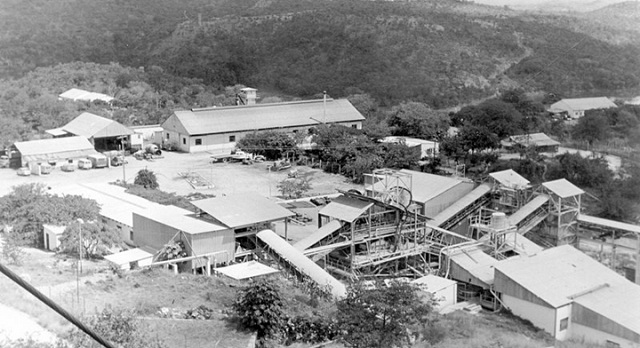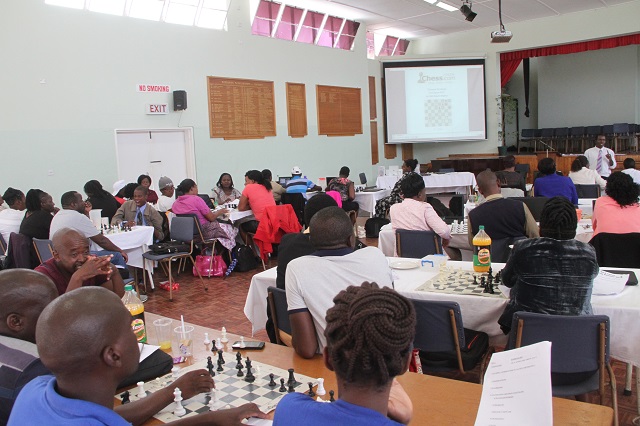Copper cable thefts prove costly to Govt

Auxilia Katongomara, Chronicle Reporter
COPPER cable thefts in Kamativi has disrupted radio services and it is proving costly to Government to use generators at transmission sites due to loss of power, a senior official has said.
Over 1,5 kilometres worth of copper cables were stolen in Kamativi recently, plunging the area into darkness and disrupting radio services.
In an interview on the sidelines of transmission site visits to Kamativi and Manjolo in Binga on Wednesday, the Permanent Secretary in the Ministry of Media, Information and Broadcasting Services, Mr George Charamba, bemoaned the vandalism saying it was derailing progress.
“My reason for coming here followed some very bad news that we got last week to say that the six services which were just launched on the Kamativi site had been interrupted and we couldn’t understand whether this was the work of an engineering failure or for some other reason and then it emerges that the high tension Zesa line from Hwange feeding into Kamativi had been vandalised.
“Actually a stretch of about 50 metres and if you consider that these lines are moving in a set of three, it means almost 1,5km of cable have been vandalised and further down in Mlibizi, a whole stretch of seven kilometres has had its cables vandalised in a similar fashion,” he said.
Mr Charamba said following the theft, they had resorted to using standby generators for transmission which was very costly. “Fortunately for us, at every site we have made sure that there is a standby generator in case of power failure except it was meant to be a standby generator. Now it’s becoming the main source of power which changes the economics of that whole system.
“The unit at Kamativi chews something like 2 000 litres per five days that is if you are running it 24/7. Someone has to drive all the way from Bulawayo carrying 2 000 litres of diesel to reload the generator so that there is continuity of service thanks to those saboteurs who stole our cables,” he said.
Mr Charamba said he first suspected that the copper cables could have been stolen for re-sale in neighbouring countries.
“Then the second interpretation which I then had to develop is actually linked to the abuse of wildlife. If you look at the cables that were stolen, around the Kamativi area, it doesn’t make commercial sense to steal one kilometre cables to export to a neighbouring country.
“So my gut feeling is that the theft is motivated by a desire to create snares for capturing wildlife for meat, in other words poaching,” he said.
Mr Charamba said he strongly suspects that the poachers had devised other means to create snares from copper cables.
“When we had a problem of poachers in the Hwange area, we got a very robust response from the security structures which means those poachers can no longer fire guns in the game reserve. What we are seeing is probably a new shift to creating snares which are a lot quieter and therefore safer for those poachers.
“What it means is that what we have stopped by way of guns, we are now suffering by way of infrastructure and can you imagine they disadvantage a whole community that was receiving radio services, disadvantage the whole of Kamativi area which is no longer lit all for the sake of quenching an appetite,” he said.
Mr Charamba said he would be engaging the Ministry of Water, Environment and Climate, the Ministry of Power and Energy and other security Ministries to stop the vice. “You can see that we are losing our wildlife and infrastructure. We are also losing the services and we are also losing money. It’s a huge loss, some robust response would have to come. I will engage those Ministries to make sure that there is a comprehensive response.
“Isn’t it interesting that the problem is only confined to Matabeleland North. It used to be there in the Midlands but we have stopped it and you can now see the relationship between the attack on the infrastructure and the abuse of the fauna,” he said.
Mr Charamba said one of the reasons he had visited Binga was to celebrate the launch of television since its invention in the 1950s.
“Television services will soon be available in Binga as work at the Manjolo site has been completed and we’re now awaiting set top boxes and receivers.
“The first reason was of course to celebrate the good works that have happened here. This is the first time since the invention of radio and television that Binga has such a facility so that’s something to be celebrated. Television was invented around 1956 and you can imagine that from then until only a few weeks back, this area never had a facility for television so it’s a major, major, breakthrough for us but it does indicate that our approach to development is people-centred,” he said.
Mr Charamba thanked President Mnangagwa for taking a personal interest in the programme and the new dispensation for availing the required resources.
Broadcasting Authority of Zimbabwe technical director Engineer Mathias Chakanyuka said the Manjolo transmission site was ready to go live and only awaits set top boxes. He said they had put up two transmitters that can host six channels each meaning that 12 channels could be received from the site.
The television transmission stretches from Manjolo to Mlibizi across Binga into Zambia and covers a radius of between 60 to 80 kilometres. “It’s ready for transmission, we are only waiting for set top boxes to come then we are good,” said Eng Chakanyuka. — @AuxiliaK











Comments